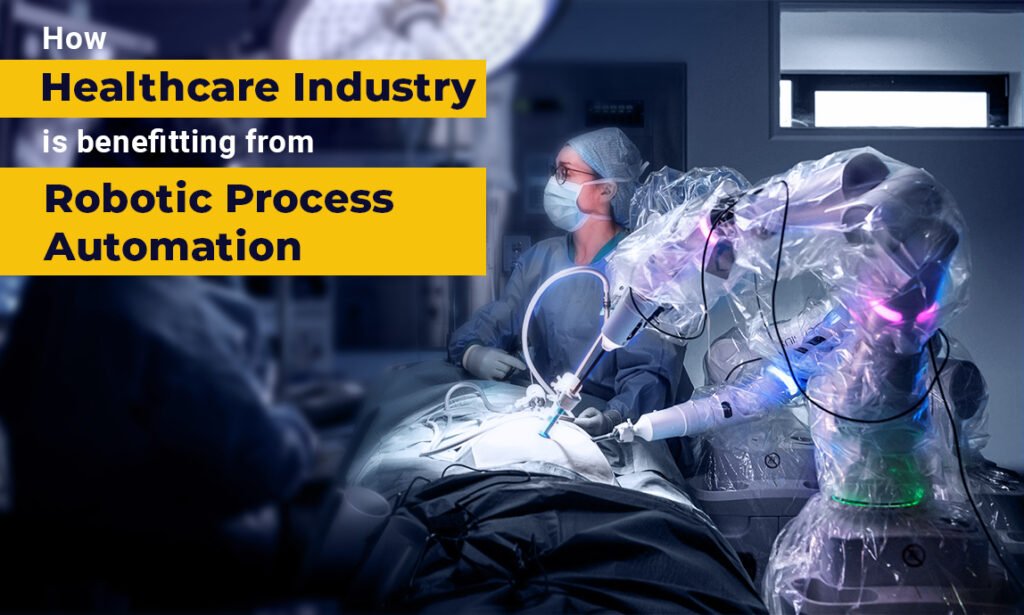
In the fast-paced world of healthcare, where time, accuracy, and efficiency determine the quality of patient outcomes, technology has always played a vital role. Today, one of the most impactful technologies making its mark in hospitals and clinics worldwide is Robotic Process Automation (RPA). While RPA is often associated with industries like banking and finance, its entry into healthcare has sparked a wave of transformation — not just in cost reduction, but also in patient care and staff productivity.
This article explores how robotic process automation in healthcare is evolving into a game-changer, why clinics and hospitals should adopt it, and the benefits it brings to both providers and patients.
What Is Robotic Process Automation in Healthcare?
Robotic Process Automation refers to software bots that mimic human actions to perform repetitive, rules-based tasks. In healthcare, this means RPA can:
- Schedule patient appointments.
- Transfer data between electronic medical records (EMR) and billing systems.
- Automate insurance claim submissions.
- Send appointment confirmations and follow-up reminders.
- Generate reports with minimal manual intervention.
Instead of replacing healthcare workers, RPA acts as a digital assistant, freeing them from routine tasks so they can focus on human-centric care.
Why Healthcare Needs RPA More Than Ever
Healthcare systems today are under immense pressure due to:
- Rising patient loads.
- Staffing shortages.
- Increasing administrative requirements.
- Higher patient expectations for digital-first services.
RPA steps in as a scalable solution to address these challenges. Automating repetitive workflows reduces administrative overhead and minimizes costly errors while ensuring compliance with healthcare standards such as HIPAA.
Key Use Cases of RPA in Healthcare
1. Patient Scheduling and Intake
From handling digital intake forms for clinics to syncing appointments with EMR systems, RPA eliminates bottlenecks and ensures no step is missed in onboarding patients.
2. Claims Processing
Insurance claims are often delayed due to manual entry and verification errors. With RPA, claims can be submitted, verified, and processed faster, improving cash flow for providers.
3. EMR Data Management
Transferring patient information between platforms often results in inaccuracies. Bots can seamlessly update EMRs, maintaining consistency across all systems.
4. Automated Reminders
By connecting with patient communication tools, RPA ensures patients never miss an appointment, reducing no-show rates and improving patient engagement.
5. Compliance Reporting
Generating compliance and audit reports manually is time-consuming. RPA bots can do it in real-time, ensuring accuracy and reducing risk.
Benefits of RPA for Healthcare Providers
- Efficiency Gains: Staff spend less time on administrative tasks.
- Cost Savings: Fewer errors mean reduced rework and lower operational costs.
- Improved Patient Experience: Patients enjoy faster responses, fewer delays, and smoother interactions.
- Scalability: Bots can manage workload spikes during peak seasons without hiring additional staff.
- Staff Satisfaction: Clinicians and staff can focus more on patient care, improving job fulfillment.
Future Outlook: RPA + AI in Healthcare
The next stage of RPA in healthcare goes beyond automation. When combined with Artificial Intelligence (AI), bots can analyze patient data, predict appointment no-shows, and even suggest personalized treatment workflows. This combination paves the way toward smart hospitals where administrative and clinical tasks are seamlessly integrated.
Final Thoughts
Healthcare is not just about medical expertise anymore — it’s about managing data, processes, and patient experiences efficiently. Robotic process automation in healthcare has proven that technology can take over the heavy lifting of repetitive work, enabling providers to spend more time where it matters most: with their patients.
As adoption grows, clinics that embrace RPA today will be the ones setting the benchmark for modern, efficient, and patient-centered healthcare delivery tomorrow.






